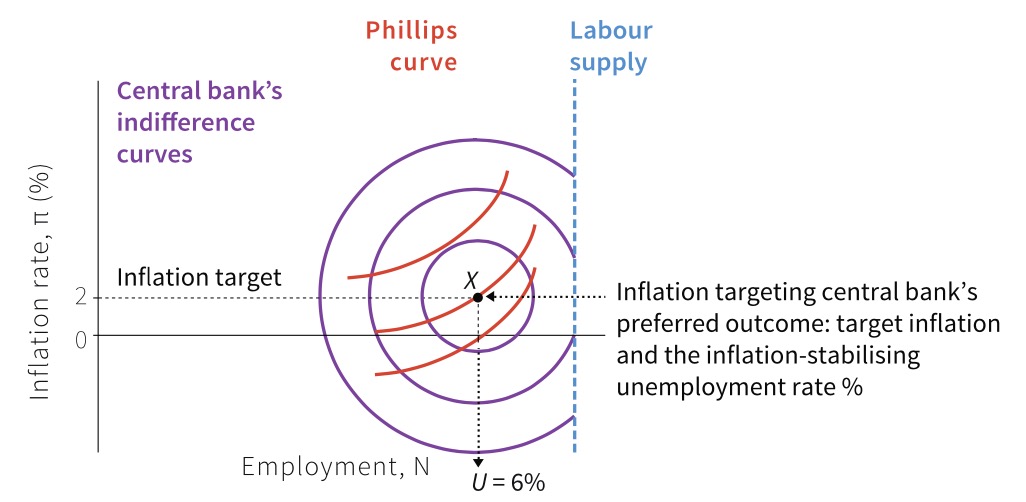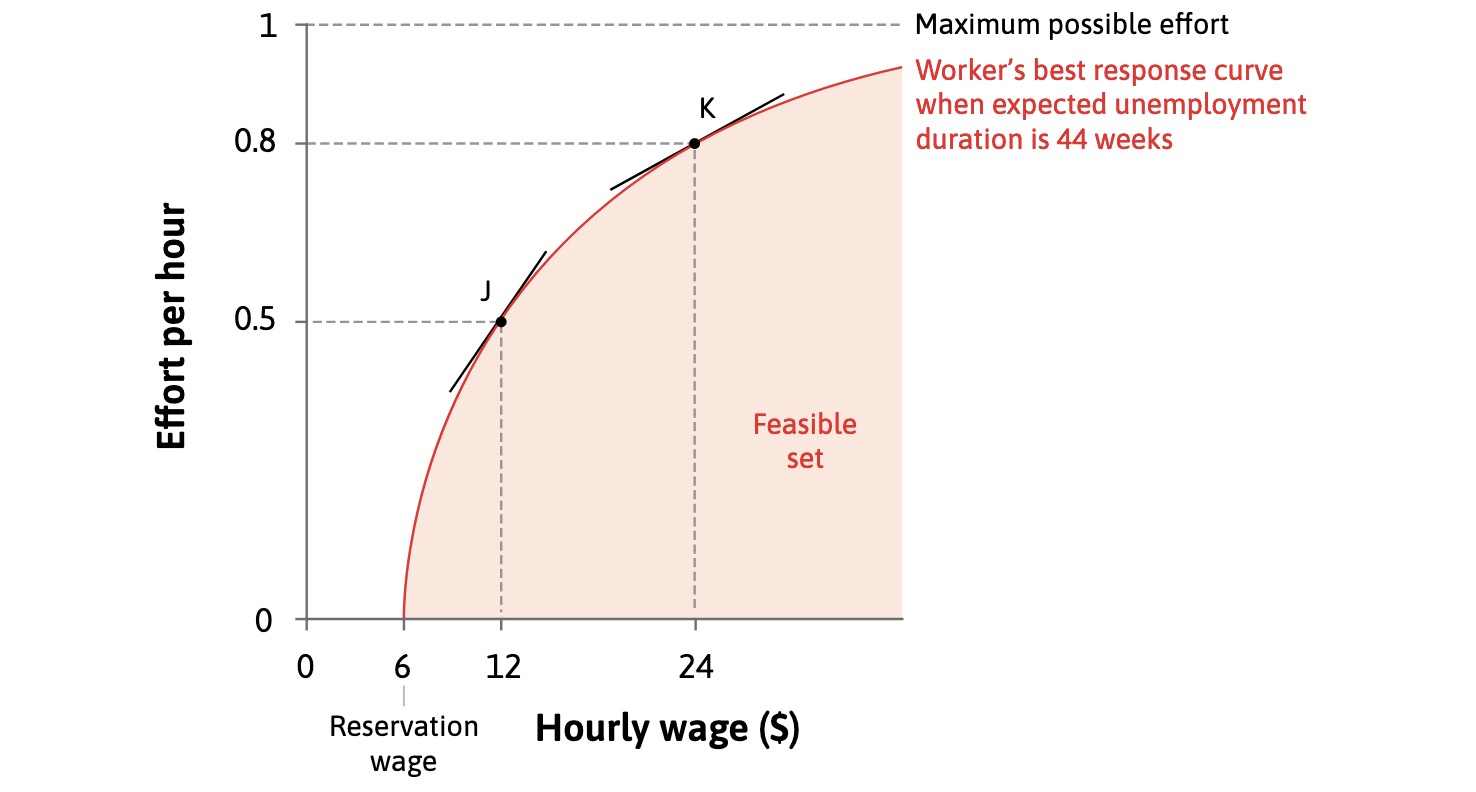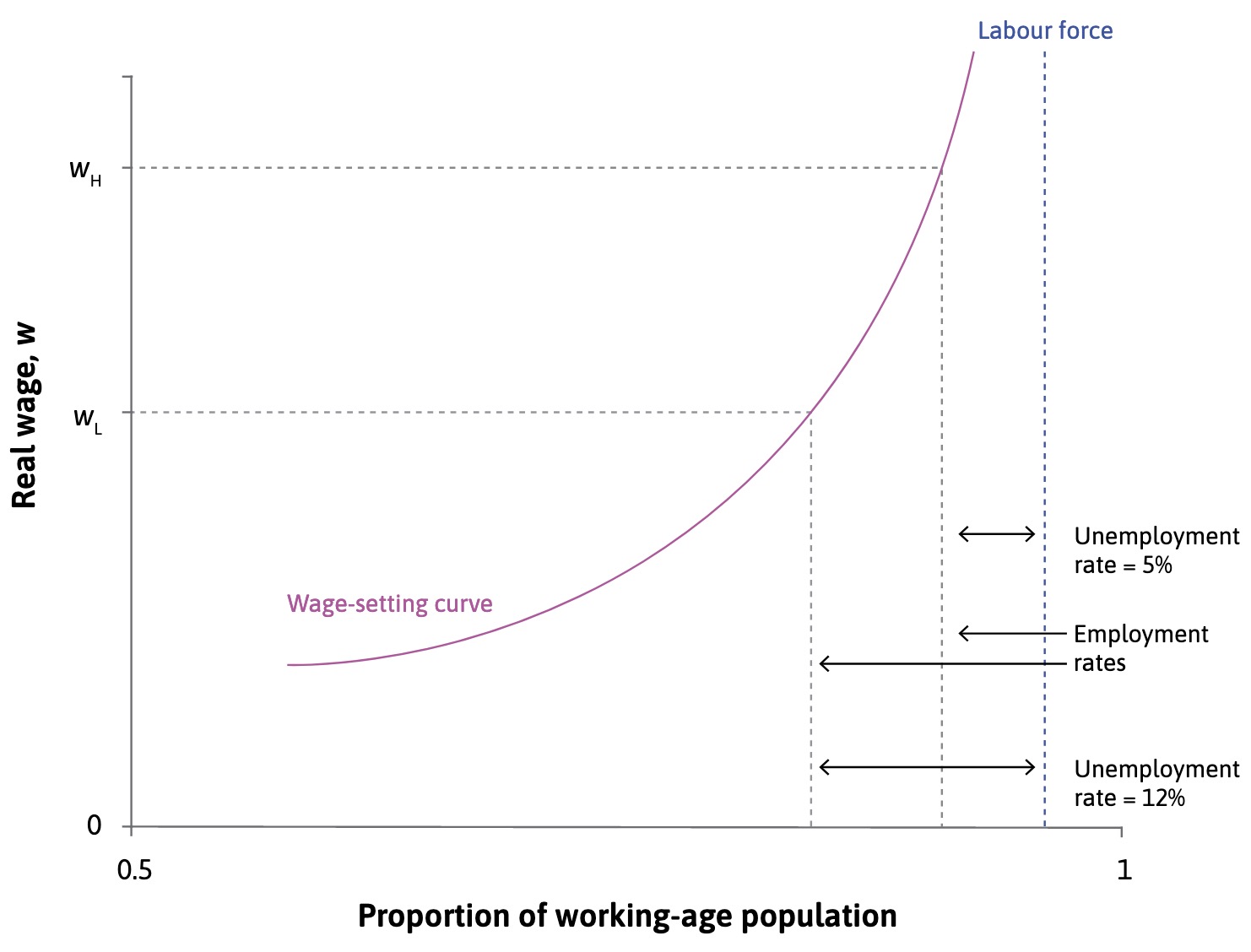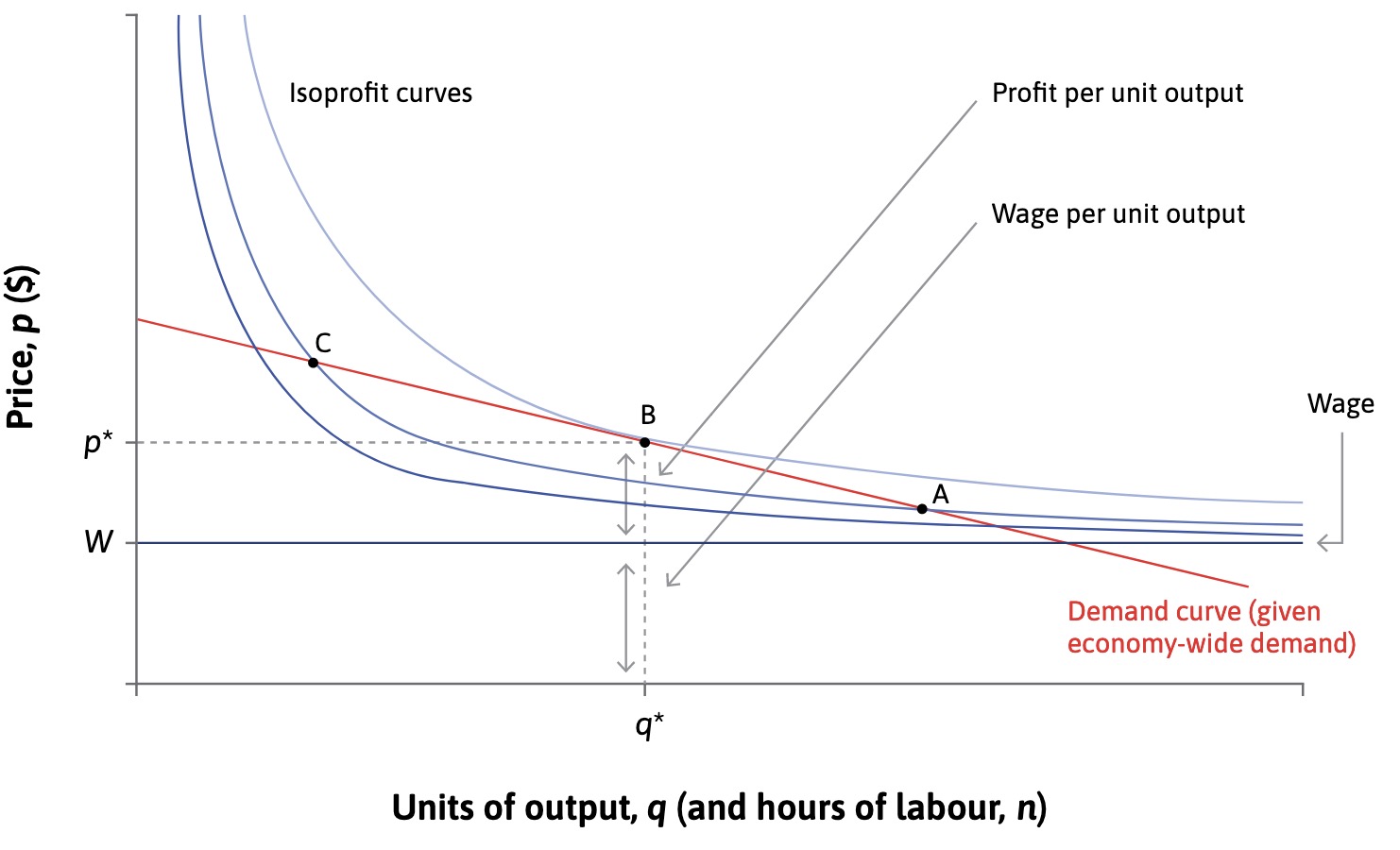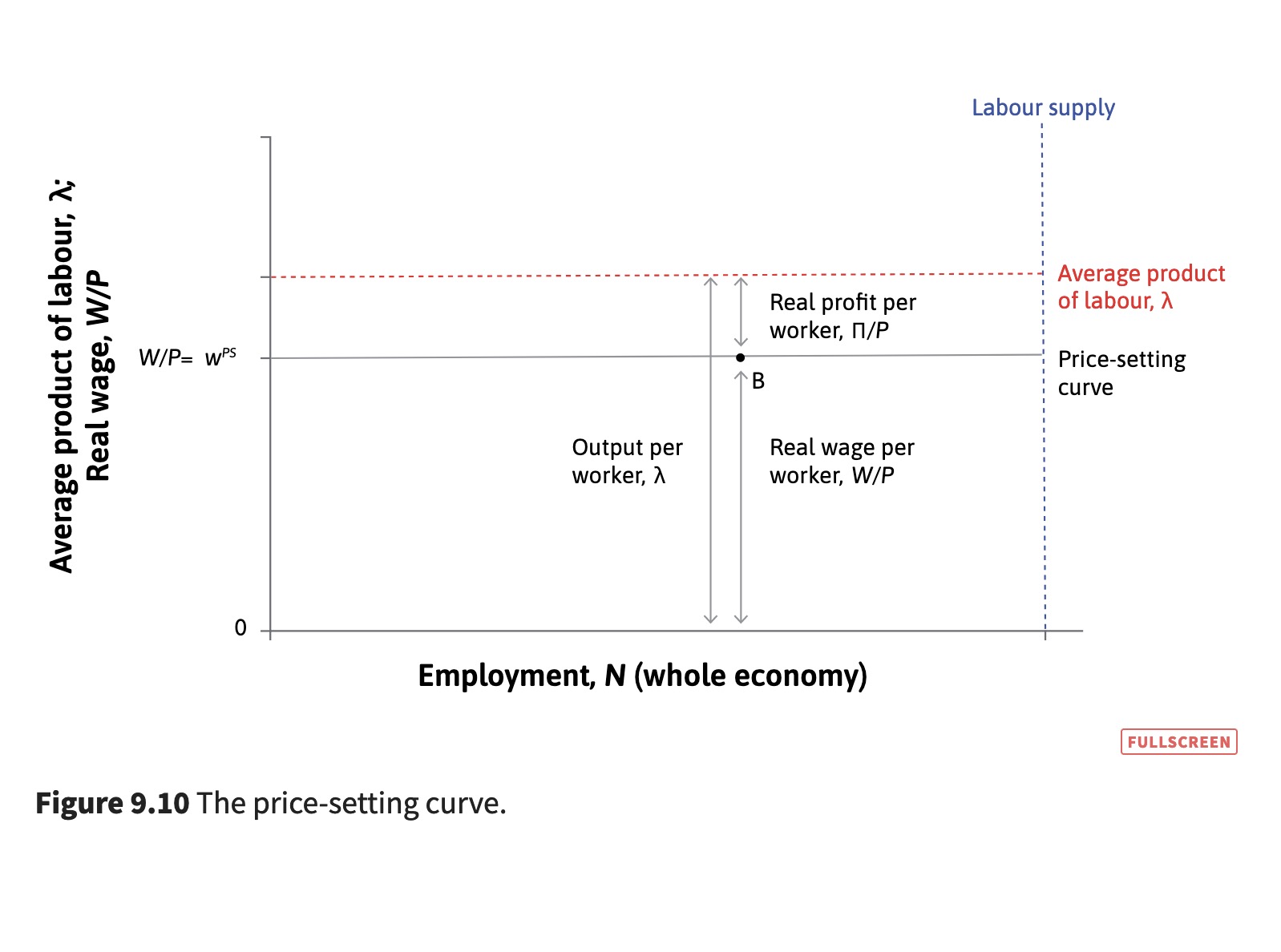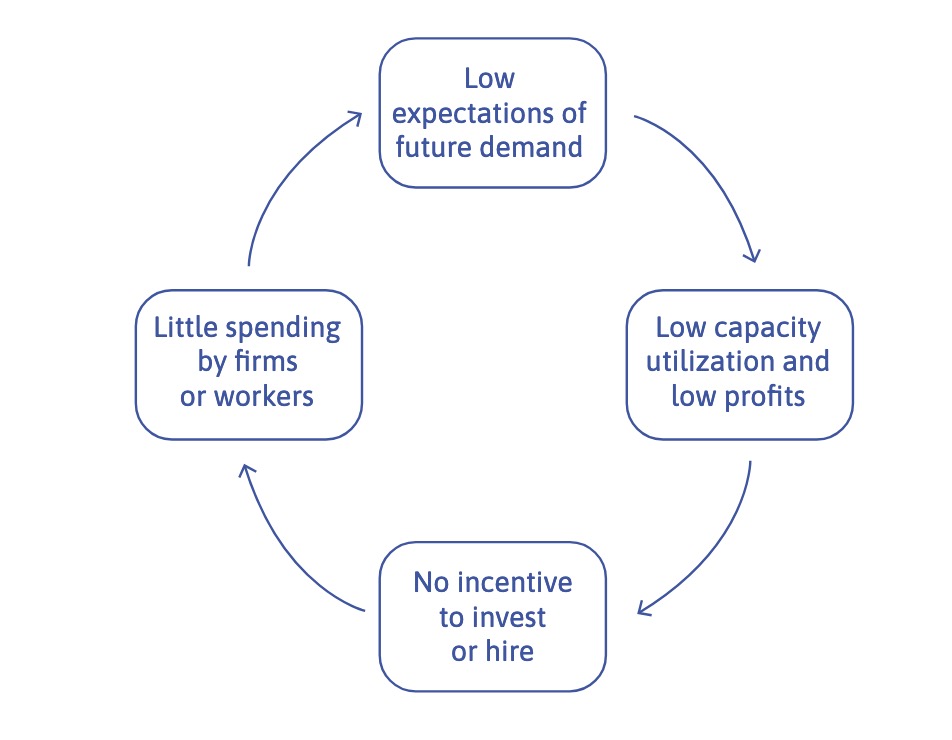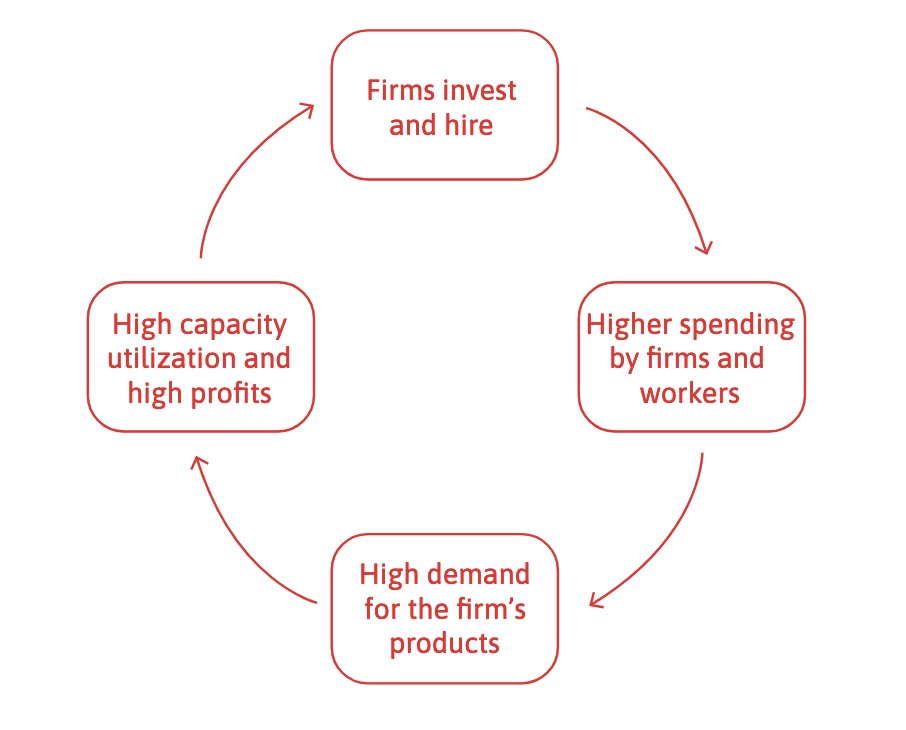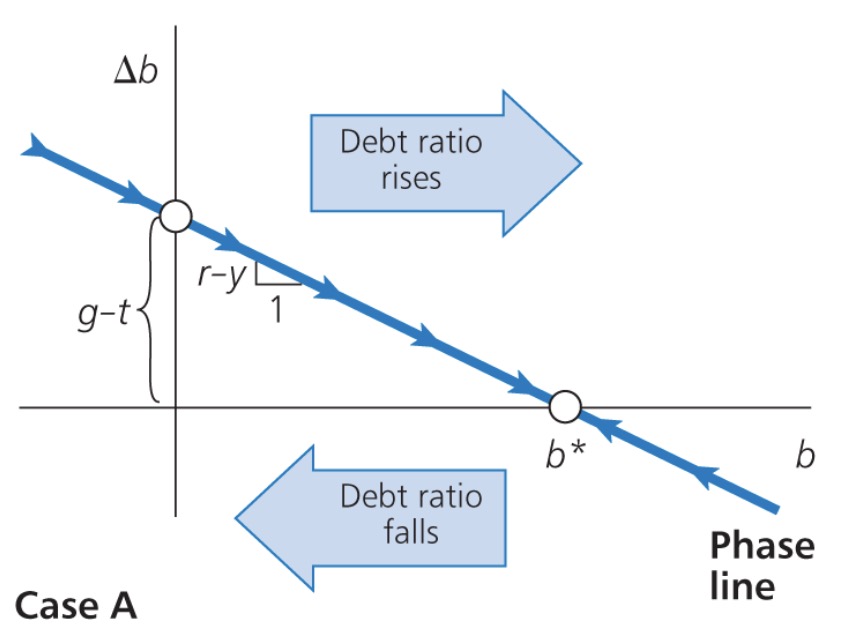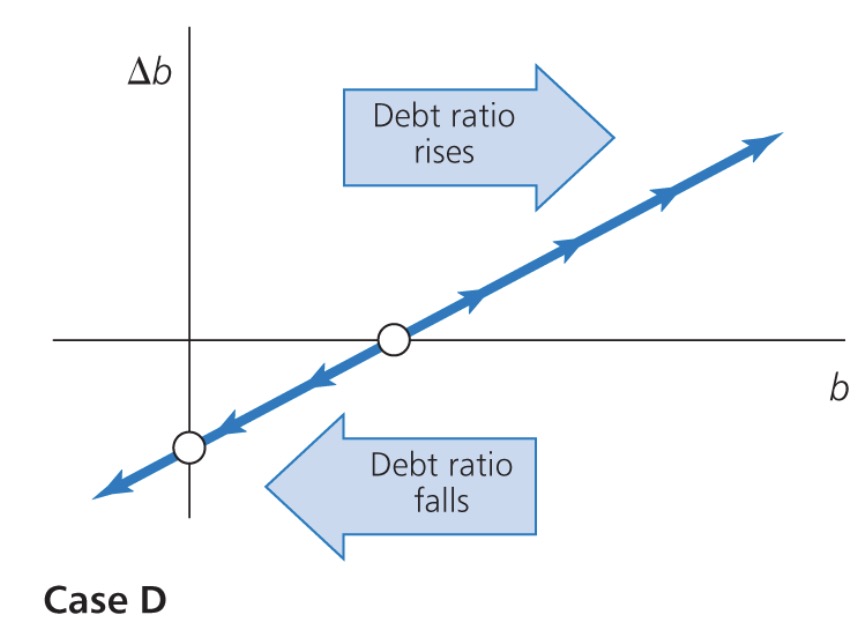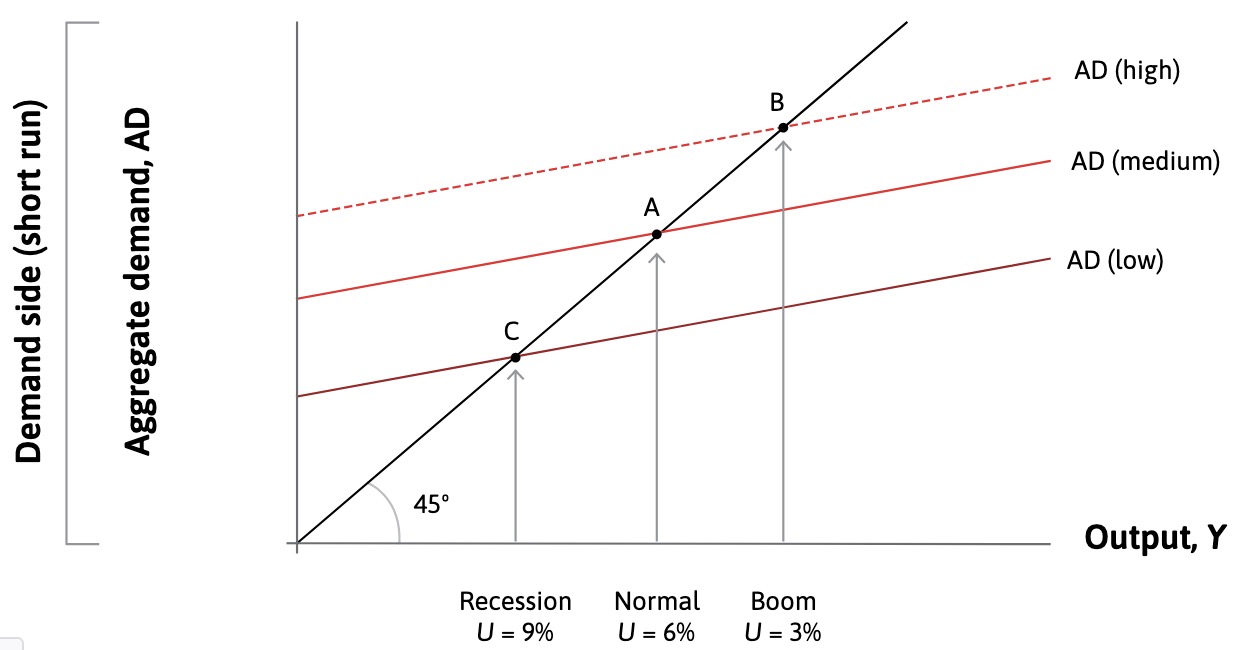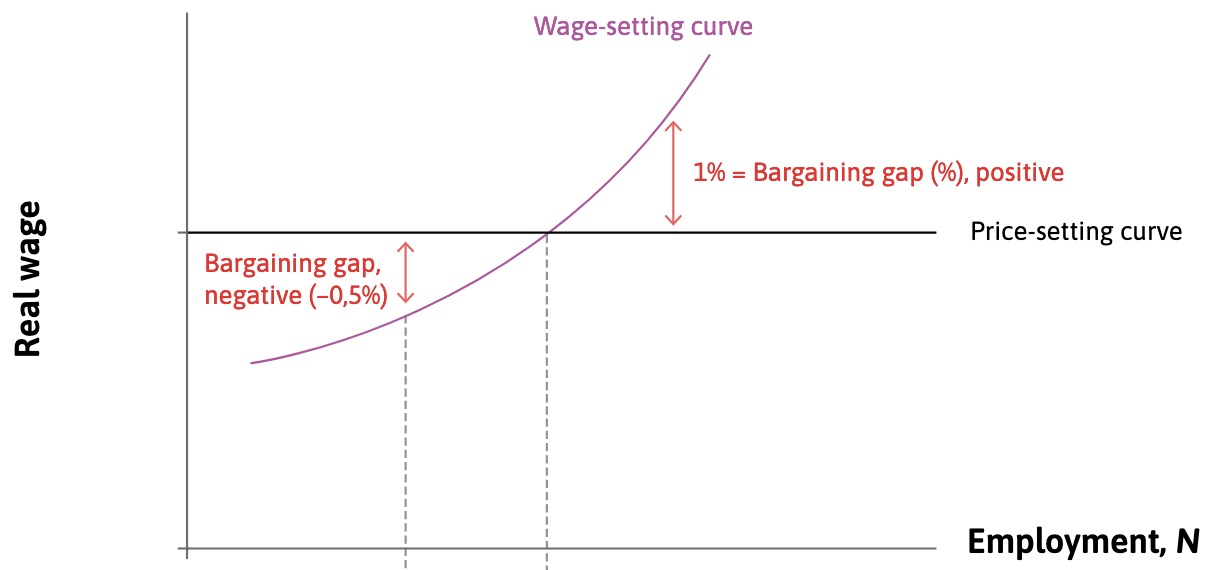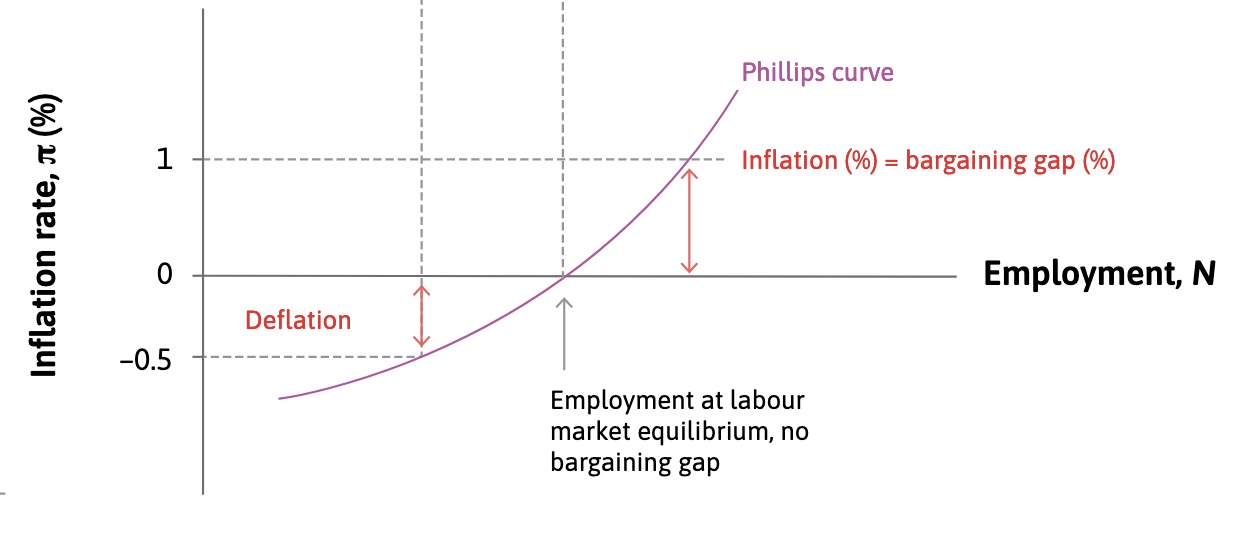Macro 2 Summary#
Table of Contents:
Labour Market#
Wage and Effort#
= individual worker
wage set in contract, depends on
reservation wage = outside option
disutility of effort
employment rent
=> firms set wage based on effort level needed (HR Department)
Wage Setting#
= whole economy
based on unemployment in economy
gives general wage level (nominal)
=> higher unemployment = lower nominal wage
individual |
whole economy |
|---|---|
|
|
Prices#
= at individual firms
Firms Decision at given Wage based on
Demand
Competition
Markup needed for shareholders
=> prices / level of output and number of needed workers
Price Setting#
= whole economy
all prices combined lead to price level
real profit per worker (\(\Pi/P\))
real wage per worker (\(W/P\))
=> only depends on competition
indivudual firm |
whole economy |
|---|---|
|
|
Equilibrium#
Wage Setting: Wage at given Effort
Price Setting: Prices at given Markup
leads to
least wage for effort
maximum employment
Involuntary unemployment (due to incomplete contracts!)
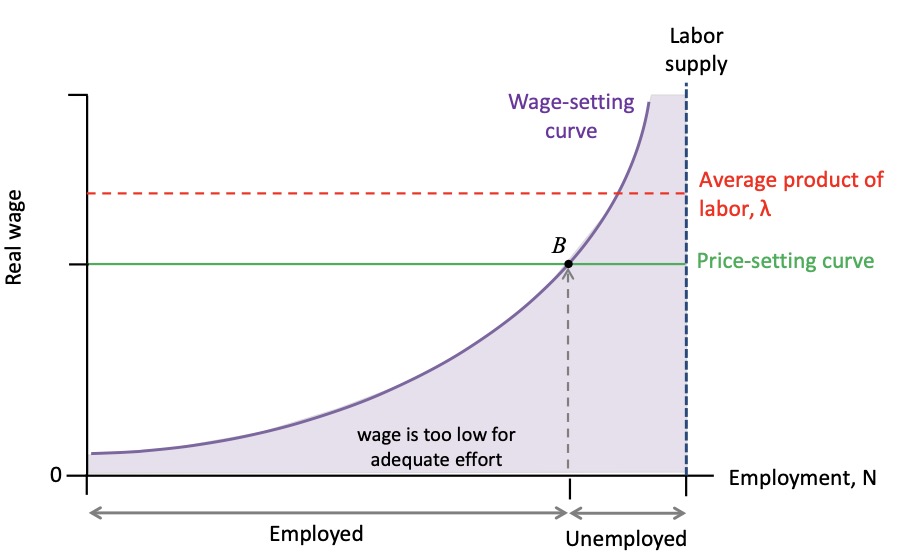
Model reaction to lower AD:
higher unemployment
lower wages along the WS-curve
lower prices for goods
higher demand for goods = higher labor demand
more employment back at equilibrium
Problem: Sticky Wages! and savings
Solution: Government Intervention to expand Demand (Monetary or Fiscal)
Banks#
lets just hope that banks dont play a big role in the exam…
Business Cycle#
Definitions#
Type of Fluctuations in capitalist economies of aggregate economic activity between contraction and expansion
Okuns Law: Connection between Cycle and Unemployment
Recession: Significant decline in economy-wide activity
GDP: Gross Domestic Product, calculated in different ways:
Income
Spending
Value added in Production
Spending: \(Y = C+I+G+X-M\)
Smooth Consumption#
individuals smooth consumption (to have higher quality of life)
Borrowing from future income
saving / repaying in high-income times
limited by:
credit constraint
weakness of will
limited insurance
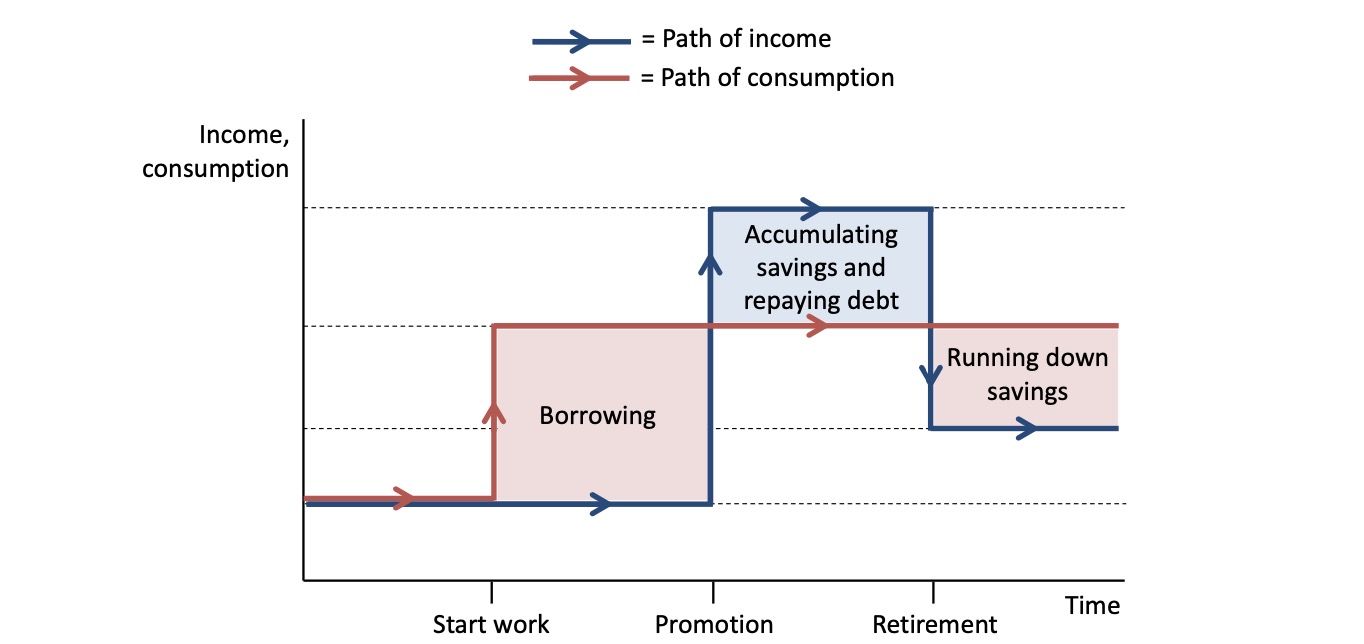
Consumption: lagging GDP, highly correlated
Volatile Investment#
Investment = depends on expectations regarding BC
Contraction |
Expansion |
|---|---|
|
|
leads to self-enforcing business cycles
Investment: leading GDP, high volatility
Government Expediture#
Share of Government spending on% of GDP (\(b\))
varies across countries
depends on taxes / other income
finacable by debt / money print
Government Expenditure: less volatile than GDP, not dependent on expectations
Stylized Facts#

Volatile |
Correlation |
Persistence |
Leading / Lagging |
|---|---|---|---|
Investment = more volatile than GDP |
Consumption / Investment = correlated to GDP |
GDP + Investment = persistent |
Investment = leading GDP |
Inflation = less volatile |
Infaltion | GDP = no strong correlation |
G Exp + Employment = very persistent |
Employment = lagging GDP |
Multiplier Model#
Consumption Function:
autonomous consumption (from smoothing): \(c_0\)
income dependent consumption: \(c_1*Y\)
based on marginal propensity to consume
45° Line = Aggregate Demand = Aggregate Supply
Everything needed is supplied (at less than full capacity)
Change in Output / Income: never relevant, moves along the line
Change in AD: relevant, because it moves the line (e.g \(I, G, c_0\) change)
exampe: higher Investment
moves Consumption Line upwards
multiplied by after round effects
Multiplier: \(k = \frac{ 1 }{1-c_1}\)
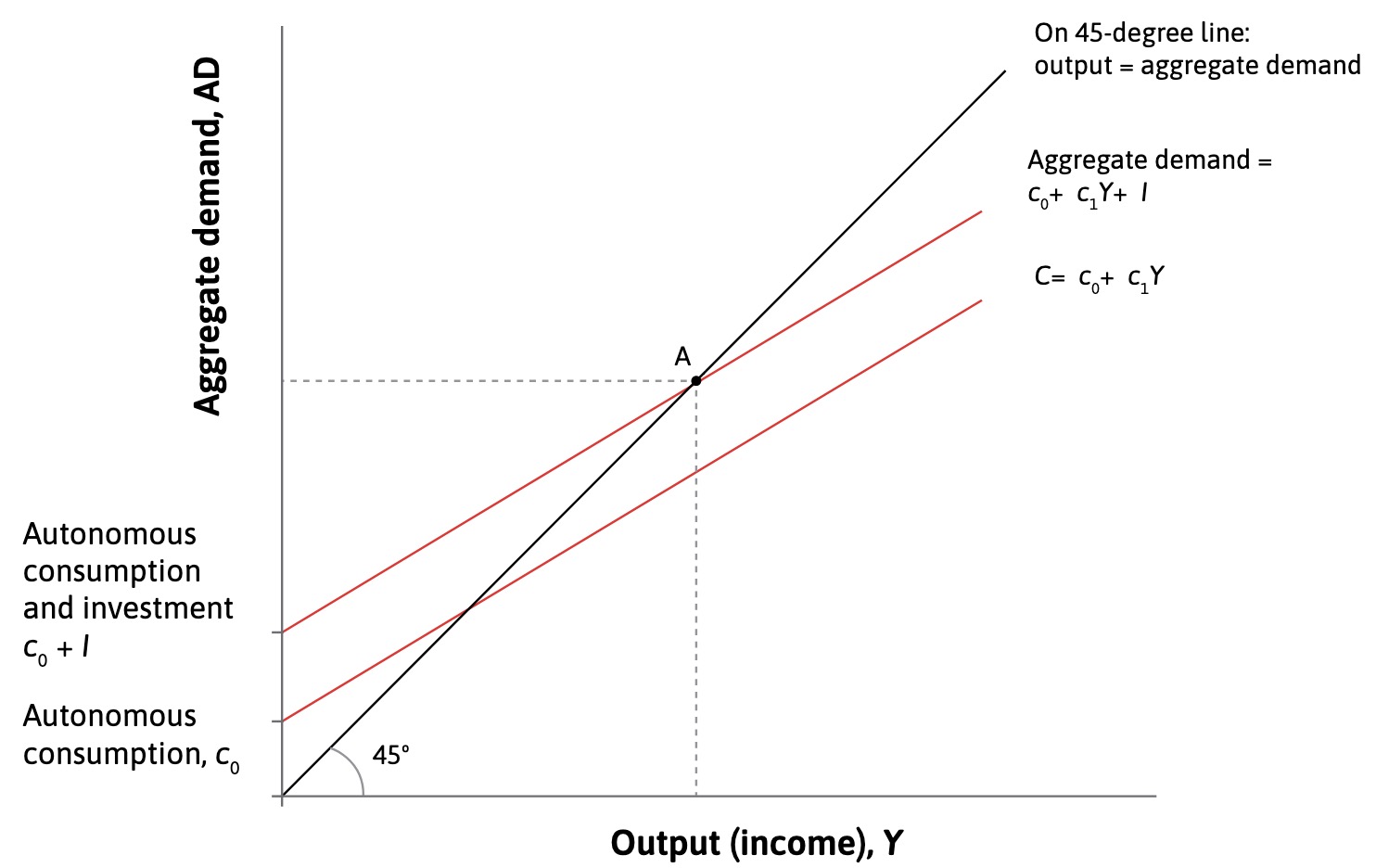
Influences on the Multiplier Model#
Fiscal Policy = dampen Fluctuations in AD
Multiplier influenced by
Exports / Imports = make Stimulus more difficult
high credit constrained = more effective multiplier
Capacity of Economy
AD and Unemployment#
Connection of both Models
Supply Side: Labor Market Model
Demand Side: Multiplier Model
Assumption: \(N = Y\)
Government#
Role = Fiscal Policy in Crisis, when k > 1 (output gap)
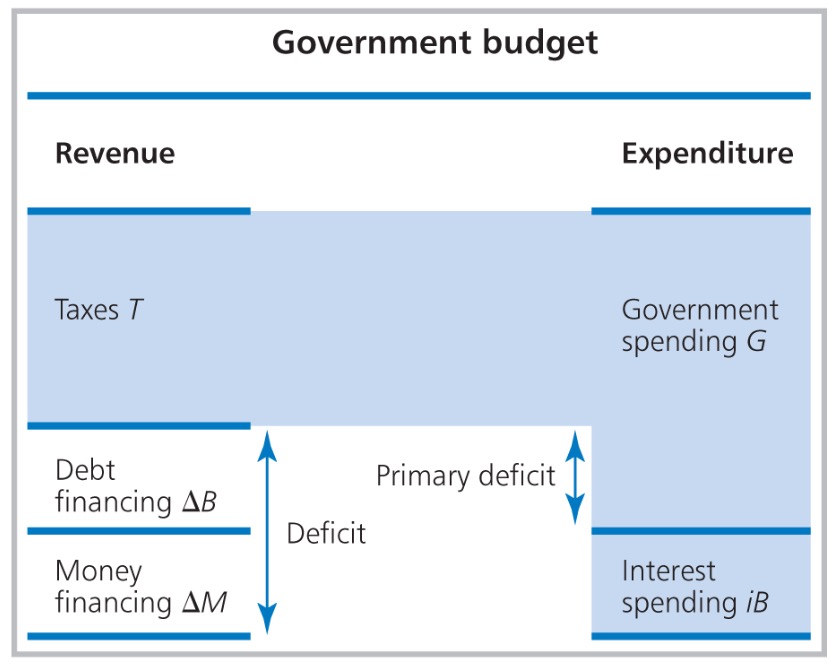
Budget Deficit: \(\Delta B = G+iB-T\)
Primary Deficit: \(G-T\)
Budget Constraint: \(T + \Delta B = G+iB\)
Important equations#
\(\Delta b = g-t+(r-y)b\) : debt ratio dynamics
\(b^* = \frac{ g-t }{y-r}\) : equilibrium debt ratio
\(b^* < 0\) = creditor
\(b^* > 0\) = debtor (should be at least)
Phase Lines#
Stability of Debt
if \(r-y < 0\) (growth higher than interest) = repayment always possible
if \(r-y > 0\) (high interest rate) = debt spirals out of hand
stable creditor |
unstable creditor |
|---|---|
|
|
Default Risk#
default probability: \(\omega\) (determined by credit agency)
\(i_0\) = riskless asset
Government Interest Rate:
Default Risk: \(\omega = \omega_0 + \beta i\) (Debt ratio and interst are in calculation)
Risk of Spirals: interest rate \(\uparrow\) = debt burden \(\uparrow\) = risk \(\uparrow\) = interest rate \(\uparrow\)
Bond Rating (R) and interest rate:
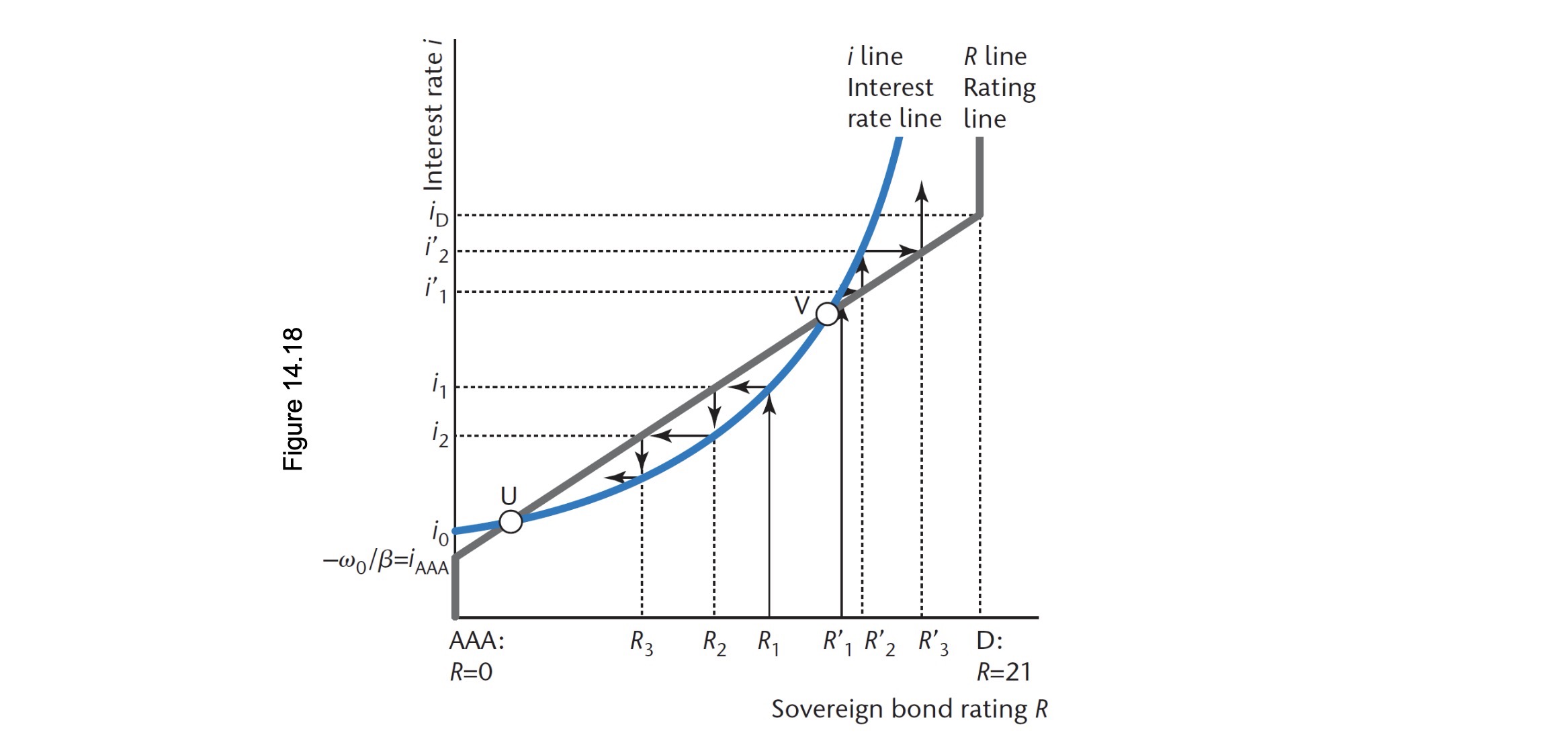
Inflation#
Inflation: increase in general price level
Philipps Curve#
Correlation between Unemployment and Inflation (inverse relationship)
Higher unemployment = lower wages = lower prices = lower inflation
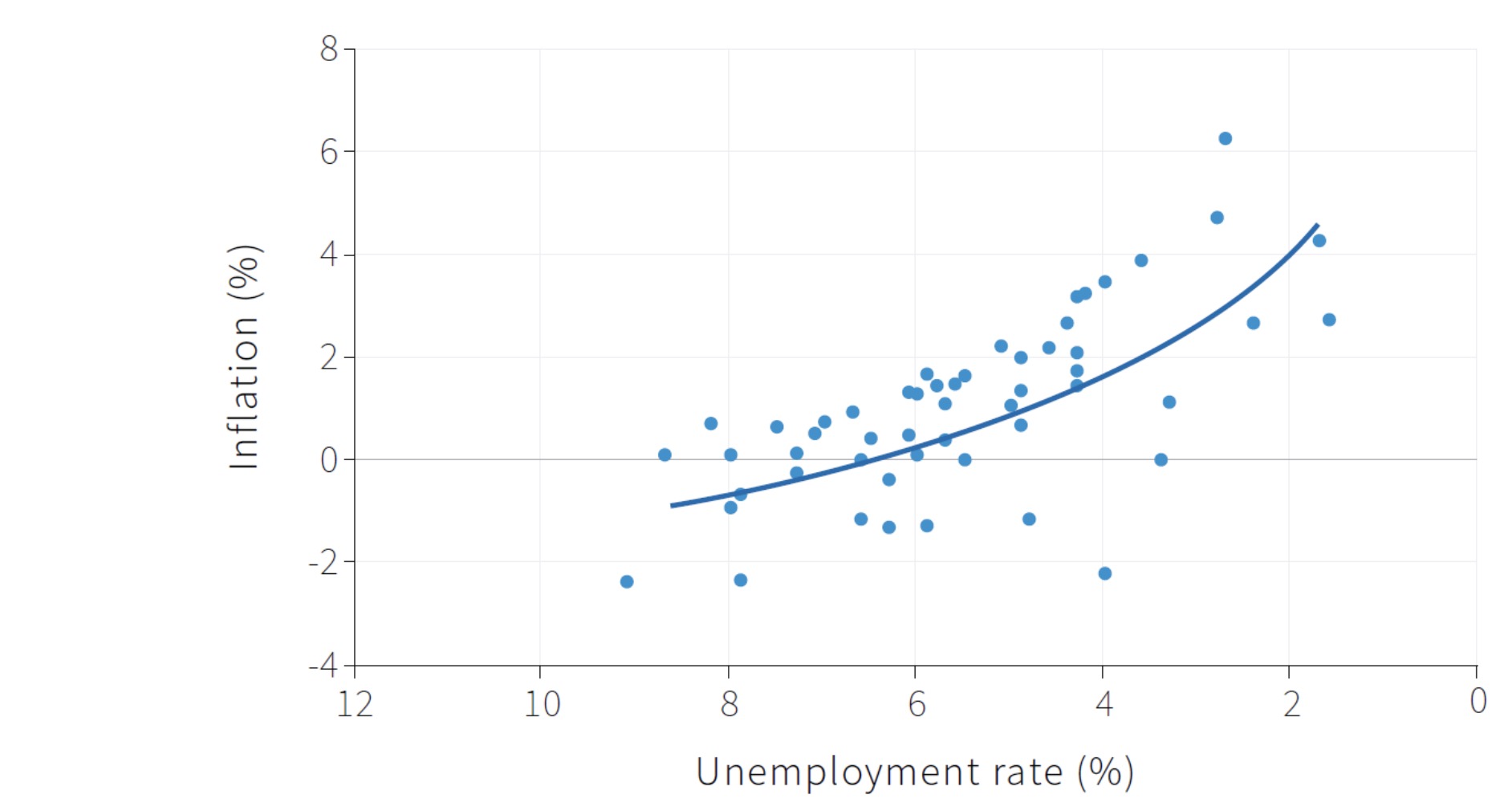
=> the philipp curve shifts with expectations of inflation! (staglfation)
Bargaining Gap#
Difference between:
Wage firms want to offer for optimal effort (Wage Curve)
Wage for optimal markup (Price Curve)
=> inconsistent claims in output
possible Reasons:
higher firmpower = higher markup = lower PS
higher union power = higher wages = higher WS
more employment = WS \(\to\)
Inflation and AD#
Combination of
short run model (Multiplier Models)
and medium run (efficiency wage model)
Effect of Boom:
lower unemplyoment
WS curve to the right
higher wages + bargaining gap
higher prices
Wage price Spiral
AD |
Wage |
Phillips |
|---|---|---|
|
|
|
Expectations#
Friedman: Expectations are integrated into inflation => no long term suprise infaltion possible
Phillips Curve Tradeoff not possible!
Situation:
normal inflation = 3%, Bargaining Gap = 2%
workers demand wage rise of 5%
but inflation next year = 5% => demand 7%
depends on static expectaions \(\pi^e = \pi_{t-1}\)
Spiral of Inflation:
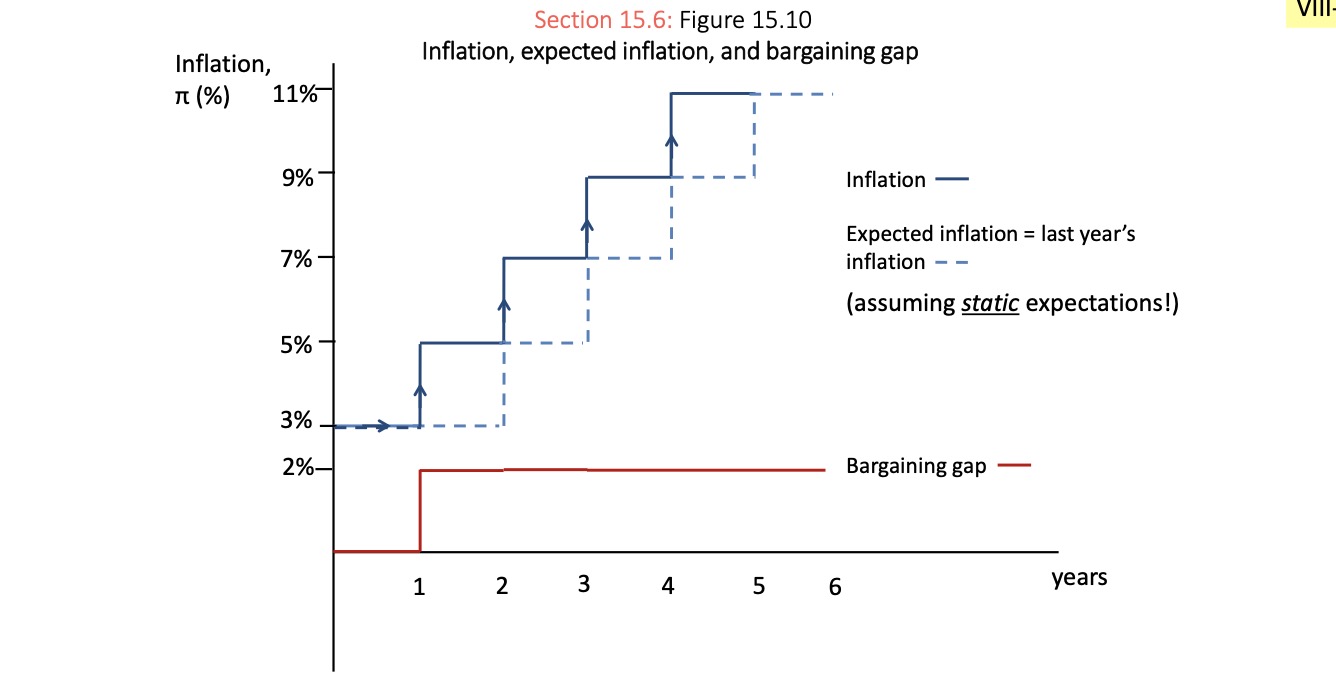
Monetary Policy#
Tools:
interest rate, influences
market interest rates (investments)
asset values
expectations
exchange rate
Quantiative Easing
Assumptions of effective MP:
independence
above zero bound
flexible exchange rate
own currency
Problems:
Trust needed
Fiscal Policy = can have opposing goals
Preferences of CB#
Loss Function: \(L = b(U-U^*)^2+(\pi-\pi^*)^2\)
Optimisation: \(U = U_n - a (\pi-\pi^e)\) (Phillips Curve with Expectations)
=> Surprise inflation = incorporated = not worth it
defines rule-based inflation targeting:
